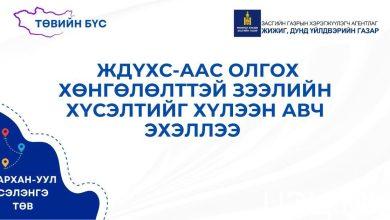The Significance of Veins: What Do Veins Do?
Blood vessels are an integral part of the circulatory system, functioning alongside arteries and blood vessels to make certain the proper functioning of the human body. While arteries carry oxygenated blood from the heart to various parts of the body, veins play a crucial role otovix precio chile in returning deoxygenated blood back to the heart. This short article will certainly check out the features of blood vessels in detail and also highlight their significance in maintaining overall wellness.
Carrying Deoxygenated Blood Back to the Heart
Among the main features of blood vessels is to deliver deoxygenated blood from the body’s tissues back to the heart. After offering oxygen to the body’s cells, arteries supply the oxygen-depleted blood to small vessels called capillaries. Veins, in turn, release waste products and also co2 right into the blood stream, changing the blood into a deoxygenated state.
Capillaries, equipped with one-way shutoffs, then take control of the task of transferring this deoxygenated blood back to the heart. The valves avoid backwards flow and also permit blood to stream in just one instructions, countering the effects of gravity. This elaborate mechanism makes certain that blood is efficiently gone back to the heart, where it can be reoxygenated and sent back right into circulation.
The whole process, known as venous return, is essential for preserving optimal blood circulation, preventing the build-up of toxic substances, and also allowing for the effective distribution of nutrients and oxygen to the body’s cells.
Aiding Contraction and also Circulation
Along with assisting in the return of deoxygenated blood, blood vessels likewise play an essential role in assisting muscle contraction and flow. Skeletal muscular tissues, which border many large blood vessels in the body, add to the motion of blood through the blood vessels. When muscular tissues contract during physical activity or movement, they compress neighboring blood vessels, pushing blood ahead in the direction of the heart.
This system, referred to as the skeletal muscle mass pump, assists to overcome the results of gravity as well as effectively push blood against gravity’s pull. Regular physical activity and also exercise are crucial for maintaining the health and strength of the skeletal muscle pump, ensuring correct venous circulation throughout the body.
Furthermore, veins have smooth muscle mass fibers in their wall surfaces that contract and also unwind, aiding in the motion of blood. By having, these muscles exert pressure on the blood, driving it forward and also avoiding torpidity or merging of blood in the capillaries.
It deserves keeping in mind that venous circulation is generally slower than arterial flow due to the reduced high blood pressure in veins. For that reason, the support of contraction as well as the contraction of smooth muscles within the capillaries are vital for keeping a stable circulation of blood.
As Blood Reservoirs
In addition to their duty in helping with blood flow, capillaries additionally function as blood reservoirs. Unlike arteries, which have thick, muscular wall surfaces, veins possess thinner wall surfaces as well as can broaden as well as acquire to fit differing blood volumes. This capability enables veins to store excess blood as well as manage blood circulation throughout the body.
Throughout exercise or times of boosted need, capillaries can contract, pressing stored blood back right into blood circulation and making sure an appropriate supply of oxygen and also nutrients get to the muscles as well as organs. On the other hand, throughout periods of remainder or lack of exercise, capillaries can unwind as well as accommodate more blood, acting as a tank to maintain blood quantity and also high blood pressure.
- Venous return is the procedure of returning deoxygenated blood to the heart.
- Capillaries have one-way valves to prevent in reverse circulation.
- The skeletal muscular tissue pump aids in venous blood circulation.
- Capillaries have smooth muscular tissue fibers to help with blood motion.
- Blood vessels function as blood tanks, managing blood volume.
Preventing Embolism and also Supporting Overall Health
The appropriate functioning of veins is crucial for avoiding the formation of embolism as well as keeping general health. When blood flow decreases or ends up being stationary because of variables such as long term stability or specific clinical problems, there is an increased threat of embolism formation.
Blood vessels possess a special function called venous valves, which operate in combination with the skeletal muscle mass pump to avoid the backwards circulation of blood and also maintain a stable circulation towards the heart. These shutoffs, in cbdus capelli addition to the muscle contractions, help to prevent blood from pooling as well as thickening within the capillaries.
Furthermore, the efficient circulation of blood through blood vessels is crucial for delivering nutrients as well as oxygen to the body’s cells as well as eliminating metabolic waste items. Healthy venous flow supports the correct functioning of organs and also systems, contributes to optimum cell feature, as well as advertises total health.
To conclude
Veins play an essential role in the blood circulation system, delivering deoxygenated blood back to the heart, assisting muscle contraction and blood circulation, acting as blood reservoirs, and also stopping embolism. Understanding the importance of blood vessels is crucial for preserving general health and wellness as well as guaranteeing optimum blood flow throughout the body.
By integrating regular physical activity, preserving a healthy way of life, as well as resolving any type of hidden medical problems, people can sustain the wellness and also function of their veins, advertising a healthy and balanced circulatory system and total health.




